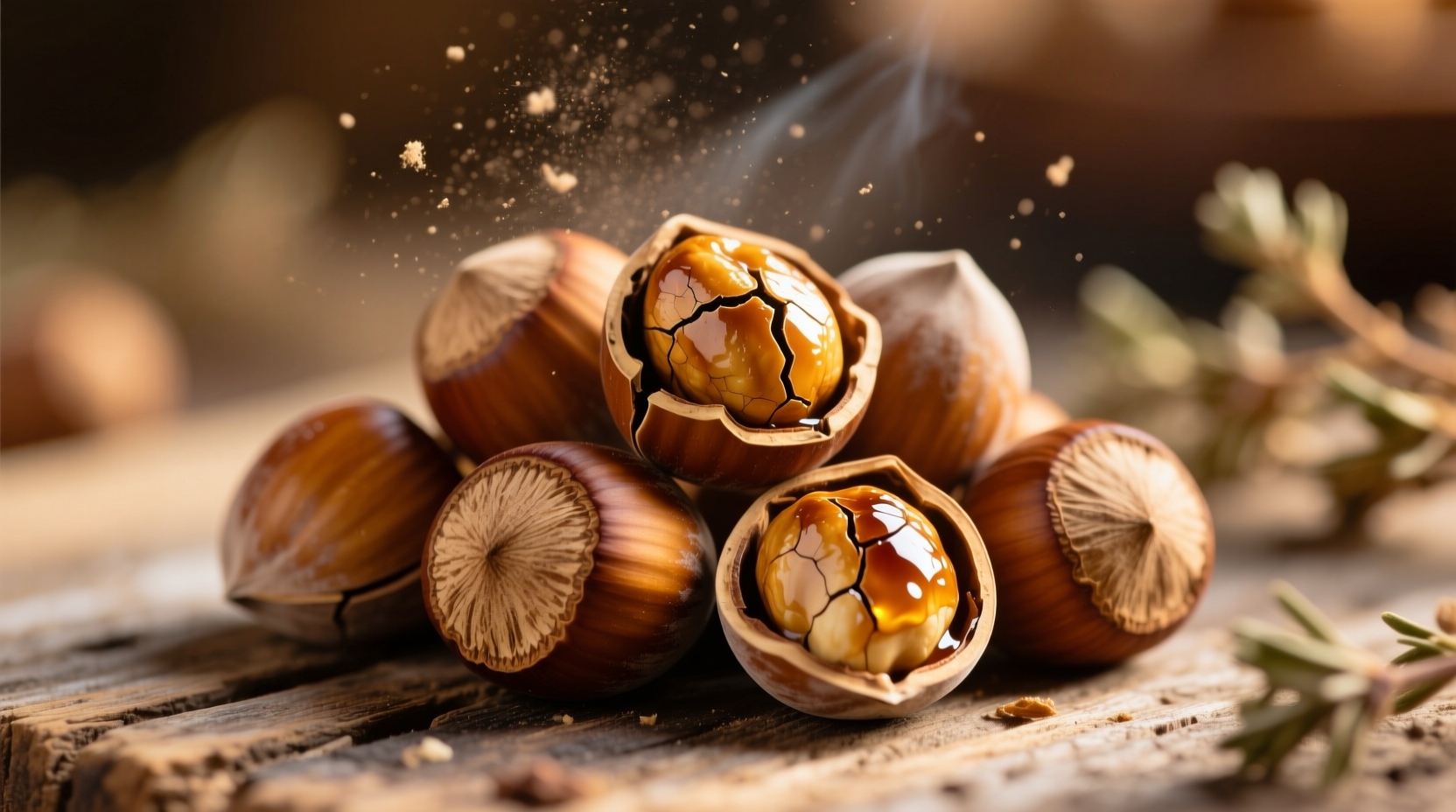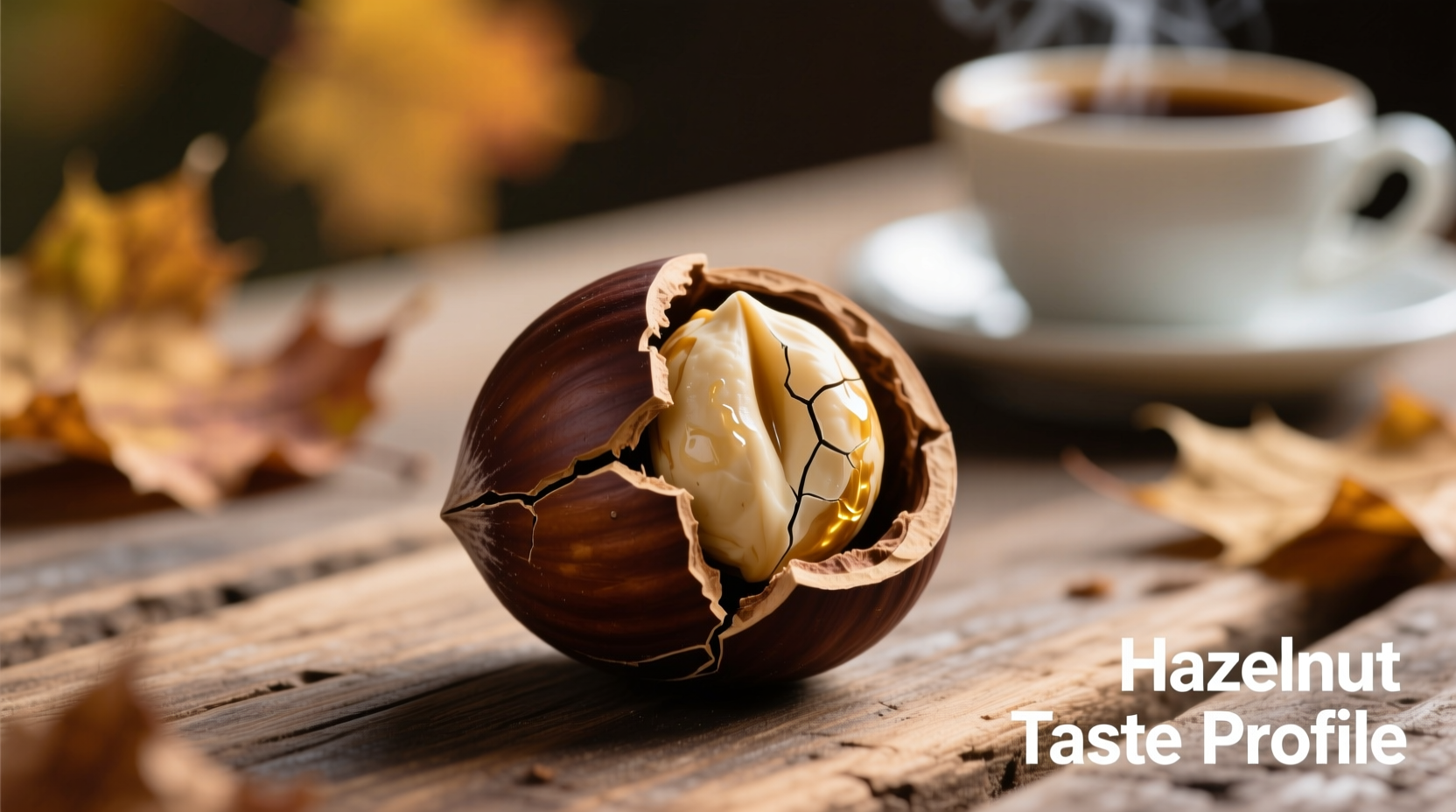Hazelnuts have a distinctive sweet, rich, and slightly earthy flavor with subtle notes of cocoa and coffee. Raw hazelnuts offer a mild, buttery taste with a delicate sweetness, while roasted hazelnuts develop deeper, more complex flavors including warm notes of caramel, toasted bread, and a pleasant bitterness that balances the natural sweetness.
Understanding exactly what does hazelnut taste like requires exploring its complex flavor profile beyond simple descriptions. Whether you're a home baker, coffee enthusiast, or culinary explorer, knowing the precise taste characteristics helps you use hazelnuts more effectively in your recipes and food pairings.
The Complete Flavor Profile of Hazelnuts
Hazelnuts, also known as filberts, possess one of the most distinctive flavor profiles among tree nuts. Their taste experience unfolds in several layers:
- Primary notes: Sweet, rich, buttery foundation with earthy undertones
- Secondary notes: Subtle hints of cocoa, coffee, and toasted grain
- Texture contribution: Creamy mouthfeel that enhances perceived richness
- Aftertaste: Mildly astringent finish that balances the sweetness
The unique compound responsible for much of the characteristic hazelnut flavor profile is filbertone, which creates that familiar roasted nut aroma we associate with premium chocolate spreads and coffee flavorings. This compound becomes significantly more pronounced when hazelnuts are roasted, explaining why roasted versions have such a stronger presence in culinary applications.

Raw vs Roasted: How Processing Transforms Flavor
One of the most significant factors affecting what hazelnuts taste like is whether they're consumed raw or roasted. This transformation isn't merely cosmetic—it fundamentally alters the chemical composition and sensory experience.
| Characteristic | Raw Hazelnuts | Roasted Hazelnuts |
|---|---|---|
| Sweetness | Mild, delicate sweetness | Enhanced caramel-like sweetness |
| Bitterness | Nearly absent | Pleasant, balanced bitterness |
| Earthy Notes | Subtle, almost floral | Pronounced, robust earthiness |
| Aroma Intensity | Mild, barely detectable | Strong, immediately noticeable |
| Aftertaste | Clean, short finish | Complex, lingering finish |
This flavor transformation occurs through the Maillard reaction—a chemical process that happens when proteins and sugars are exposed to heat. The reaction creates hundreds of new flavor compounds, dramatically intensifying the nut's natural characteristics. Professional chefs often recommend roasting hazelnuts before use because this process can increase the concentration of key flavor compounds by up to 300%, according to research published in the Journal of Agricultural and Food Chemistry.
Factors That Influence Hazelnut Flavor
Not all hazelnuts taste exactly the same. Several factors contribute to flavor variations that affect what hazelnuts taste like in your recipes:
Freshness Matters Most
Freshness significantly impacts hazelnut flavor. Properly stored fresh hazelnuts have a clean, sweet aroma, while stale nuts develop rancid, paint-like off-flavors due to oxidation of their high oil content (approximately 60% fat). The USDA recommends storing shelled hazelnuts in airtight containers in the refrigerator for up to 6 months or in the freezer for up to 1 year to maintain optimal flavor.
Origin Affects Flavor Profile
Hazelnuts grown in different regions develop distinctive flavor notes:
- Turkish hazelnuts: Classic balanced profile with pronounced sweetness
- Italian Tonda Gentile: More delicate, with floral notes and less bitterness
- American varieties: Often more robust with stronger earthy notes
Proper Storage Preserves Flavor
The high fat content that gives hazelnuts their rich mouthfeel also makes them vulnerable to flavor degradation. Exposure to light, heat, and oxygen causes oxidation that creates unpleasant rancid flavors. For best results, store hazelnuts in opaque containers in cool, dark places. The Oregon State University Extension Service notes that properly stored hazelnuts maintain their characteristic flavor for significantly longer than those kept in suboptimal conditions.
Practical Applications: Using Hazelnut Flavor Effectively
Understanding what hazelnuts taste like helps you use them more effectively in your cooking and baking. Here's how to maximize their flavor potential:
Perfect Pairings for Hazelnut Flavor
Hazelnuts complement certain ingredients exceptionally well due to flavor chemistry:
- Chocolate: The shared flavor compounds create natural synergy
- Coffee: Roasted notes enhance each other
- Berry fruits: Sweet-tart contrast balances richness
- Vanilla: Enhances the sweet, creamy aspects
- Sea salt: Counteracts bitterness and heightens sweetness
Techniques to Enhance Hazelnut Flavor
Professional chefs use specific methods to maximize the distinctive hazelnut taste profile:
- Dry roasting: 350°F for 10-12 minutes until fragrant
- Skin removal: Eliminates bitter tannins for smoother flavor
- Toasting with sugar: Creates caramelized notes through controlled Maillard reaction
- Infusing liquids: Steeping in warm cream or milk extracts maximum flavor
When incorporating hazelnuts into recipes, remember that their flavor intensifies during cooking. The Food Science Department at the University of Turin found that baking hazelnuts in cookie dough increases the perception of roasted notes by approximately 40% compared to eating them raw.
Common Misconceptions About Hazelnut Flavor
Several myths persist about what hazelnuts taste like that can lead to culinary disappointment:
- "All hazelnuts taste the same": Different varieties and growing conditions create distinct flavor profiles
- "Raw is always better": Roasting significantly enhances flavor complexity in most applications
- "Bitterness means they're bad": The mild bitterness in roasted hazelnuts is a desirable flavor component that balances sweetness
- "More is better": Hazelnuts have a strong flavor that can dominate if overused—typically 10-15% of total ingredients is optimal
Understanding these nuances helps you work with hazelnuts more effectively, whether you're making praline paste for pastries, grinding them for frangipane, or simply enjoying them as a snack.
Putting Hazelnut Flavor Knowledge to Work
Now that you understand what hazelnuts taste like and what factors influence their flavor, you can make more informed choices in your kitchen. When selecting hazelnuts, look for those with a fresh, sweet aroma and uniform color. Avoid any with dark spots, musty smells, or visible mold.
For the best results in your recipes, always toast hazelnuts before use (unless the recipe specifically calls for raw) and remove the skins to achieve the smoothest flavor profile. When storing, keep them in the freezer if you won't use them within a few weeks—this preserves their delicate flavor compounds far better than room temperature storage.
Whether you're exploring the hazelnut flavor profile for baking, coffee pairing, or chocolate making, this knowledge helps you appreciate and utilize one of nature's most distinctive and versatile flavors.











 浙公网安备
33010002000092号
浙公网安备
33010002000092号 浙B2-20120091-4
浙B2-20120091-4